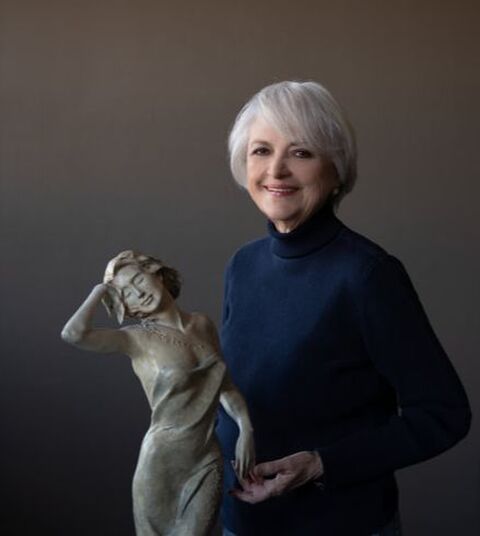THE ARTIST......
Moana Ponder expresses her artistic vision in classic fine art bronze with emphasis on the female figure. Raised in a family of artists she learned the language of visual art from childhood. Her love of dance and the environment have frequently influenced her choice of subject matter. She often personifies elements of nature such as the sea and butterflies into graceful forms that are both elegant and alive. Other work springs from an inner landscape, one of the mind. Some pieces are introspective while others reach out to the infinite. Whatever the subject, there is an attention to lyrical line and rhythmic movement that delights the eye.
Born in Hawaii she was educated at Punahou School and then the University of California at Berkeley. Specific study was under Edy Burke, Tyler Norman, Fritz White and others as well as study at the Honolulu Academy of Arts. Time spent in Italy and France also greatly influenced her work.
Originally a painter, she took up sculpture in 1995 and enjoyed a rapid rise to national attention. In just the first few years of work as a sculptor her work was exhibited at Chamizal National Memorial in El Paso, Texas and the National Sculpture Society Awards Exhibit at Brookgreen Gardens in South Carolina and at Park Avenue in New York. Her work has since been exhibited in fine galleries from coast to coast and is collected both nationally and internationally.
CORPORATE COLLECTORS INCLUDE
Texas Protective Life Insurance Company
Mousa Enterprises
Ramada
Saint Mary's Hall School of Dance
Saint Regis Jesuit Girls School
Best Western
Healthy Skin
NOTABLE PRIVATE COLLECTIONS INCLUDE
Haselden Collection, Colorado
Gasparian Collection, Colorado
Wiesman Collection, Colorado
Roark Collection, California
Strain Collection, California
Camarda Collection, California
Fickle Collection, Texas
ASSOCIATED WITH ...
American Women Artists
National Sculpture Society
Women Artists of the West

